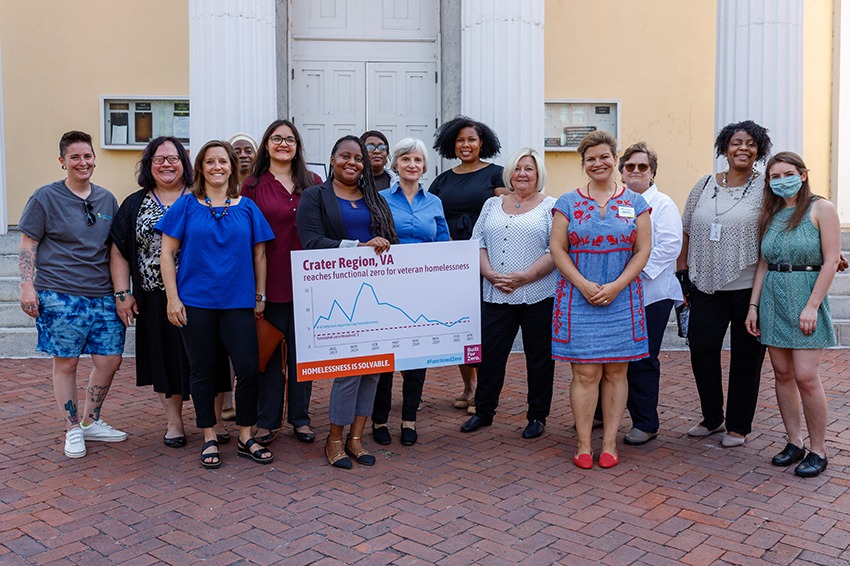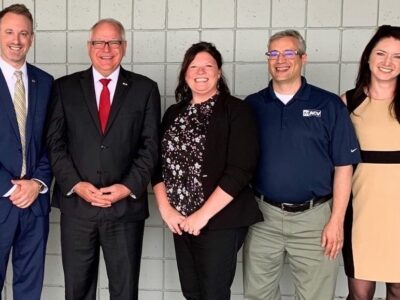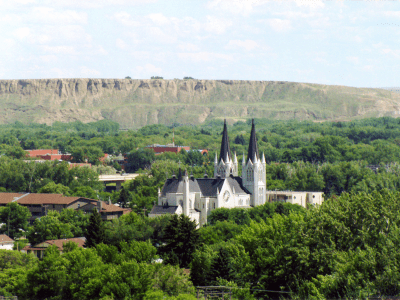When the pandemic hit the Crater Region of Virginia, the community was faced with even more barriers to ending homelessness and keeping communities safe.
Luckily, the community was able to lean on a strong network to focus on ending veteran homelessness with the accountability and support of local partners, even as complications from COVID-19 impacted the team and the work.
“We can’t do this without each other,” said Erica Holmes, community lead and Director Of Program Operations at St. Joseph’s Villa.
During this time, they realized just how far they could go together, as a community.
In February of 2021, the Crater Region first reached functional zero for veteran homelessness, proving it is possible to create a reality where fewer veterans are experiencing homelessness than can be housed in a month.
Watch Erica Holmes, Director of Program Operations at St. Joseph’s Villa., share how her community reached functional zero for veteran homelessness in this HISTORY® video by our Built for Zero partners at Rocket Mortgage.
But the work of functional zero does not end there. A community works to create a sustained reality where homelessness is rare and brief — which requires developing a system that can be resilient to the dynamic nature of homelessness. After reaching their functional zero threshold of three veterans experiencing homelessness, the number of veterans experiencing homelessness rose to four in the following months. Relying on the strength of their collaborative system, the community is working to drive the number back to its functional zero threshold of three.
“Today, the Crater region has proven it is possible to reach this incredible milestone,” said Kimberly Tucker, Senior Director of Housing and Homeless Services at St Joseph’s Villa. “Now begins the work of continuing to sustain it.”
Building a data system
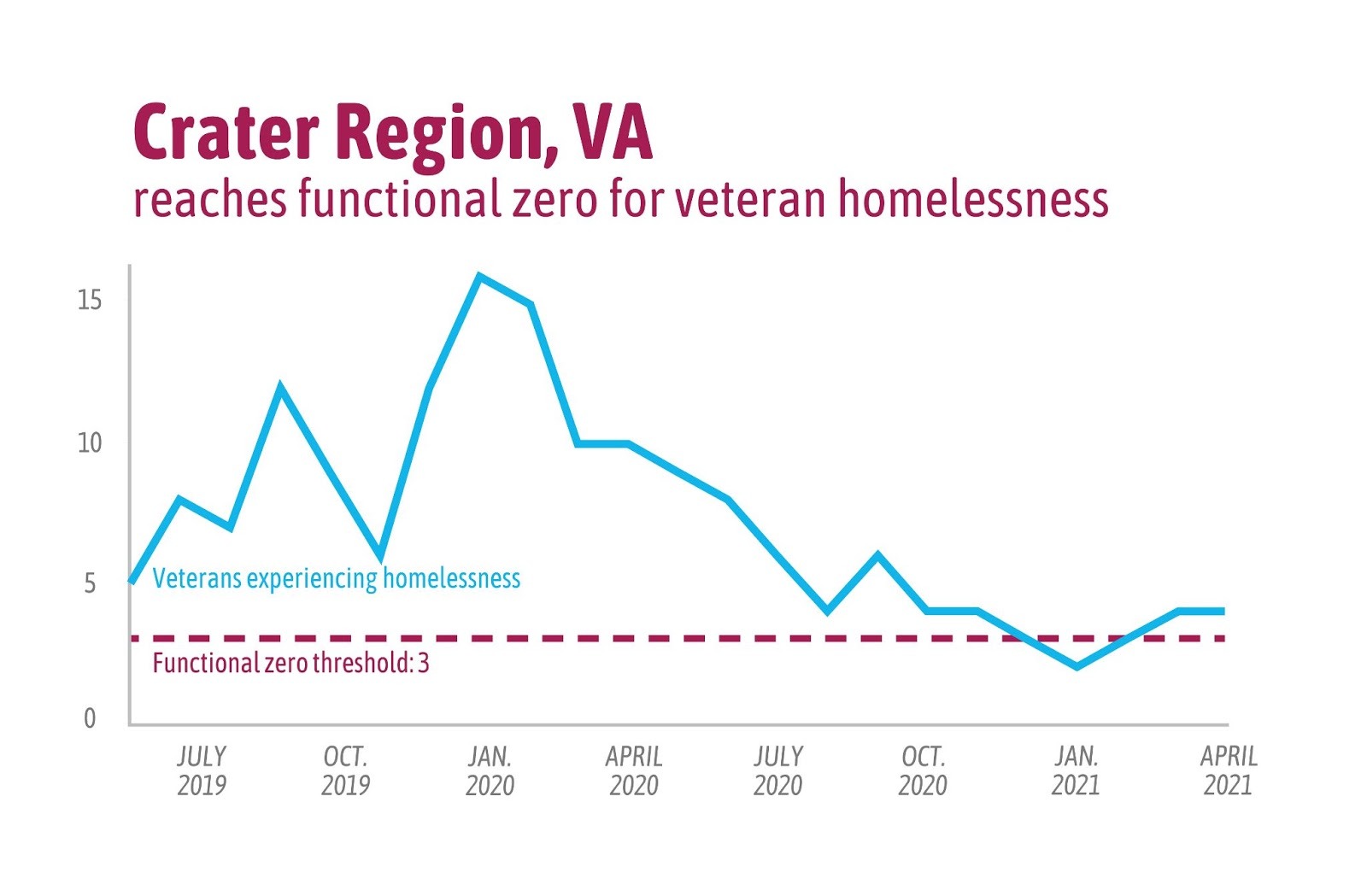
After joining Built for Zero in May of 2019, Crater Area got to work on the first step to functionally ending homelessness: building quality, by-name data, or a real-time, person-specific list of every veteran experiencing homelessness in the community. This shared database of quality data helps a community ensure that every single veteran is known by the team of people who can help them — by need and name.
“In the beginning, we were focused on data quality and making sure we were capturing every veteran experiencing homelessness and communicating about them,” Holmes said. “It makes a difference to be able to speak the same language and to coordinate among ourselves, rather than giving it to the veteran to navigate.”
This process required ensuring that everyone holding a piece of the solution to homelessness in their region was sharing data in real time.
When one provider was identified as not reporting its data into the shared by-name list, Ara Mendoza, leader of the Virginia Balance of State Continuum of Care (which includes the Crater Region) joined the St. Joseph’s Villa team to set up a meeting with the provider. The provider was able to receive training and join the local command center working together, strengthening the team’s ability to serve all veterans experiencing homelessness.
The region also identified the need for a dedicated person to stay on top of data tracking, engaging all partners, and maintaining data quality guidelines.
After bringing in an AmeriCORPS Vista member to fill this position and clearing the last hurdles to quality, real-time data, the community saw the number of unhoused people entering their system — or inflow — decrease as they improved the way they worked together to prevent homelessness.
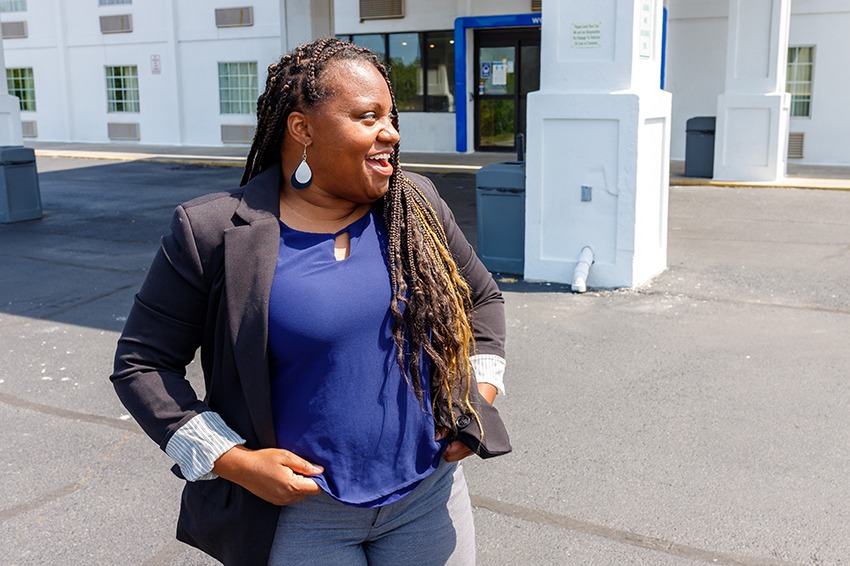
“We worked to help our community partners understand how everyone plays a role in ending homelessness.”
— Erica Holmes
The power of case conferencing to bring together a community
In November of 2020, Built for Zero convened a summit dedicated to helping communities improve case conferencing, or a regular meeting dedicated to discussing and problem-solving for each veteran experiencing homelessness. Energized from the summit, the Crater Region community returned with some action-based strategies to improve their efforts to connect people with housing.
The team initially faced challenges bringing the entire region into their weekly case conferencing calls.
“We worked to help our community partners understand how everyone plays a role in ending homelessness,” Holmes said.
Whether or not a provider offered veteran services, they were invited to the table to see where resources were available, and help fill any gaps in the homeless response system using shared, by-name data.
Word started to get out about the case conferencing calls, and soon, everybody wanted to join weekly calls to help remove the barriers to ending veteran homelessness. As a result of this powerful collaboration, housing placements for veterans and other populations accelerated, putting the community into the threshold for functionally ending veteran homelessness.
“We don’t have the resources or funding that a lot of the large Continuums of Care do,” Holmes said. “Building on grassroots was key. We use our community partners to meet the needs of those that we’re serving. That includes leveraging community support and grass roots organizations, like faith-based organizations, across the community.”
COVID-19 and what’s next
The COVID-19 response required and enabled the Crater Region to work together as never before. Local shelters faced closures even before COVID, which posed a challenge to connecting people to services. The CARES Act allowed the community to move people into hotels and motels for quarantine and isolation.
“We knew where to find people and were able to connect them to rapid rehousing and diversion to get them into housing,” Holmes said. “This opened our eyes to new creative opportunities to problem solve and get people into housing. It forced us to work together on how to have housing conversations and make best use diversion resources.”
Amid the challenges of the pandemic, the team powered through to functional zero thanks to a powerfully supportive network dedicated to ending homelessness in the region. They made sure to lift up the achievements of staff, paying special attention to lift up the contributions of staff of color. Their collaboration and problem-solving grew stronger as they harnessed the power of local grassroots and faith-based organizations, and allowed everyone the space to transparently communicate and lean on one another when support was needed.
The work is not over until everyone in Crater Region has a system of support that ensures they can leave homelessness behind. With the possibility of increased evictions that will inevitably displace individuals and families, the community plans to focus on strengthening the powerful community relationships to help people as they enter the homeless response system.
This will require building relationships with landlords, addressing the affordable housing gap, and preventing people from falling into the system to begin with.
But as was demonstrated by reaching functional zero, the community’s leadership has proven it can rise to the challenges that face it.
“This was a community where the leadership stood out,” said Shantae Smith, the Built for Zero coach for the Crater Region team. “And strong leadership isn’t just about a person with a particular title — it’s about the leadership in each person. And that’s where we saw the strength of the community.”
TIMELINE TO FUNCTIONAL ZERO
2019
- May: Crater Region joins Built for Zero Collaborative
- October: Team attends the Built for Zero Learning Session and shifted improvement focus to data quality buy-in
2020
- Spring: Crater Regions enacts and develops COVID-19 response, capitalizing on expanded shelter capacity due to Q&I hotels to engage people experiencing homelessness
- July: All providers integrated into the Crater Region Coordinated Entry System (CES)
- August: Crater Region brings AmeriCorps VISTA role onboard to accelerate progress toward quality data
- October: Reached quality data on veteran homelessness.
2021
- February: Crater Region reaches functional zero for veteran homelessness
